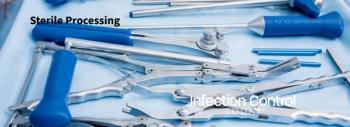
Maintaining a Sufficient Level of Reprocessing Equipment
By Nancy Chobin, RN, AAS, ACSP, CSPM, CFER
Q: How are we supposed to comply with manufacturers’ instructions for use (IFU) when we don’t have enough processing equipment? We are a small ambulatory surgery center and we have asked for more equipment but never get it.
A: When a facility fails to comply with instructions for use (IFUs), they are liable for any issue with patient injury or acquired infection. AAMI and the Food and Drug Administration (FDA) recommend that all devices be cleaned, disinfected and/or sterilized according to the instructions for use provided by the device manufacturer. This is a patient safety issue. Unless this information is obtained and followed, ineffective cleaning and/or sterilization may result.
Obtaining, filing and referencing the most up to date IFUs can be a tedious job. However, unless the IFUs for cleaning are available in the decontamination area, staff is unable to comply. It is recommended to copy the cleaning instructions for all devices, place in plastic page protectors and keep in the decontamination area for staff reference. Maintain the IFUs. In-service the staff and develop reference guides to ensure the devices/instruments will be cleaned according to the instructions.
Staff compliance with manufacturer’s instructions is not optional. Failure to comply with the cleaning protocols is a patient safety issue as well as a legal liability for the facility. The Centers for Medicare and Medicaid Services (CMS) is focusing on compliance with manufacturer’s instructions and will ask for the IFUs of various devices. All IFUs should be dated when received. I recommend that all general IFUs should be updated at least every two years or upon receipt (if the item is reordered). If a company fails to provide the needed information, the device/instruments should not be used.
Unfortunately, many facilities, especially smaller ambulatory care facilities, do not even have an ultrasonic cleaner. Others may have a mechanical washer but is was not intended for cleaning surgical instruments. Selection of cleaning equipment should not be based on available space or funds, it must be based on compliance with the IFUs. There are many choices today for ultrasonic cleaners and mechanical washers. For example, multi-level ultrasonic cleaners offer increased capacity with a small footprint (saving space).
The FDA categorizes ultrasonic cleaners as Class 1 medical devices that are intended to clean other medical devices. Ultrasonics only clean, it does not disinfect or sterilize. They eliminate soil from hard-to-reach locations such as box-locks, ratchets and jaws of surgical instruments. Since ultrasonic cleaners just clean, and if ultrasonic cleaning is the only method available for cleaning, staff should wear powder-free gloves when handling the instruments in the preparation and packaging area.
Mechanical cleaning offers more than additional cleaning capability, it also offers protection to the processing technician. Ultrasonic cleaning does not provide a reduction in microorganisms that is achieved with washer-decontaminators.
The FDA requires that medical device manufacturers provide at least one, validated method of cleaning. Therefore, you will usually see the manual cleaning method most often provided. However, you can always contact the company to inquire if mechanical cleaning can follow the manual cleaning. Get this information, in writing, from the manufacturer and place with the original IFUs.
The usual cycle of cleaning is enzyme pre-soak, rinse, ultrasonic cleaning, rinse, mechanical cleaning. However the device manufacturers’ IFU is the process you need to follow each and every time.
Regardless of the size of your facility or sophistication of the services your facility provides, you will need at least one ultrasonic cleaner and one mechanical washer. The ultrasonic cleaner should be of sufficient size to accommodate a set of instruments. You may need a separate tabletop unit for ophthalmic instruments. If your facility processes loaned instruments, the number of ultrasonic cleaner becomes even more critical. Many loaned instruments require extended sonic cycles. Since many orthopedic cases require multiple loaned sets per case, one ultrasonic cleaner may be tied up for most of the shift just cleaning the loaned sets. So, what happens to the other surgical instruments that also require sonication? Is the sonic process not performed? Or, do the loaned instruments not get sonic cleaned? Neither option is acceptable.
Another area of concern is the cleaning implements needed. Cleaning is dependent upon using the recommended cleaning implements. Implements such as store-bought toothbrushes should not be used. Only implements intended for cleaning surgical instruments/devices should be used. If the IFU specifies a specific brush, it must be used(or an equivalent).
Sterilization of devices can also be problematic. Most larger facilities have steam sterilizers with a chamber that is larger than 2 cubic feet. These usually have standard cycles and temperatures. However, many smaller facilities have tabletop sterilizers (defined by AAMI as having a chamber size of 2 cubic feet or less). They were purchased when the facility opened but may no longer be compatible with the newer devices being processed. Many tabletop sterilizers offer a variety of cycles such as a pouch cycle, wrapped cycle and hand piece cycle. The pouch cycle is usually set for 270 degrees F. with 5 minutes' exposure. However, most surgical instruments are validated for 270 degrees F. with as 4-minute exposure. Can you instruments be exposed to the 5-minute exposure time? Will this impact on the instrument? The wrapped cycle is usually set for 250 degrees F. with a 30-minute exposure. Are your instruments/devices validated for this cycle? What about your packaging materials, biological and chemical indicators?
In summary, all manufacturers’ instructions for use (IFUs) should be readily available to the SPD staff, regardless of where the IFUs are stored; compliance with the IFUs, including cleaning, packaging, and sterilization IFUs, should be monitored. It is important that sterile processing professionals remember that the device manufacturer’s IFU must be followed exactly as written, each and every time the device is processed. Noncompliance with IFUs creates patient safety, standard-of-care, and legal issues for the healthcare facility. Although the device manufacturer is responsible for qualifying the sterilization process for the device, healthcare personnel are responsible for demonstrating that they can replicate that process exactly and consistently. Healthcare personnel are responsible for ensuring that the cleaning, packaging, and sterilization methods recommended by the device manufacturer can be duplicated in their environment and that the manufacturer’s instructions are followed correctly. Compliance with IFUs is required by all processing personnel regardless of the setting. It is inexcusable not to have all the equipment and supplies needed for safe and effect processing of devices. Risk management and infection prevention should be involved in solving any issues with non-compliance regarding equipment, supplies, and even staffing.
Nancy Chobin, RN, AAS, ACSP, CSPM, CFER, is a sterile processing consultant and educator.
References:
ANSI/AAMI: ST79:2017. “Comprehensive Guide to Steam Sterilization and Sterility Assurance in Healthcare Facilities.”
Management Basics for Sterile Processing, 4th edition, 2017. Sterile Processing University, LLC.
The Basics of Sterile Processing. 6th edition, 2016. Sterile Processing University, LLC.
Newsletter
Stay prepared and protected with Infection Control Today's newsletter, delivering essential updates, best practices, and expert insights for infection preventionists.





